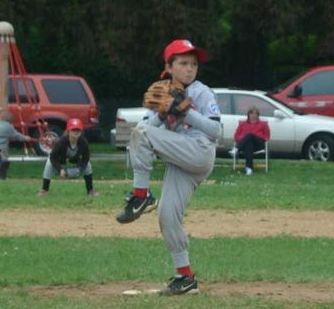
Whether practicing baseball fundamentals or working on their throwing and swinging form, youth baseball players engage in a great deal of repetitive motions, particularly in their throwing arms and elbows. As a result, such athletes, without proper conditioning and rest, are at risk of suffering overuse injuries.
According to the US Consumer Product Safety Commission, nearly 200,000 children aged 14 and younger were treated in hospitals, doctor's offices and emergency rooms for baseball-related injuries in 2008. The American Academy of Orthopaedic Surgeons (AAOS) recommends that youth baseball players practice proper form and avoid over-exertion to prevent baseball-related injuries. Parents and coaches must be alert to guidelines for healthy play or signs of pain and trouble.
"With youth baseball programs becoming more developed and competitive, it is not uncommon for little leaguers' bodies to become overworked," said orthopaedic surgeon, Mark Pinto, MD. "It is great to see American youth be active and passionate about baseball. It's just important for us, as adults or coaches to monitor the time each player spends on the field, specifically in regards to the number of throws or pitches and to make sure they are using proper form when doing so."
Injury Prevention Tips
To prevent overuse injuries in youth baseball the AAOS makes the following recommendations:
- Players should always take time to warm up and stretch before and after play because research studies have shown that cold muscles are more prone to injury.
- If a child is pitching, he should concentrate on stretching his arm, shoulder and back muscles.

- If a child is catching, the focus should be on the legs and back.
- Children should be discouraged from playing in pain, an early warning sign of a possible overuse injury.
- Children should limit the number of teams on which they play in one season. Kids who play on more than one team are especially at risk for overuse injuries.
- Parents, coaches, doctors, and players need to keep the lines of communications open in order to properly diagnose and treat more significant baseball injuries. Remember: young players may not be able to recall exactly how an injury happened or describe their symptoms in detail. Children should be encouraged to report their injuries, not hide injuries to avoid being removed from the game.
Source: American Academy of Orthopaedic Surgeons
Created: May 11, 2010








